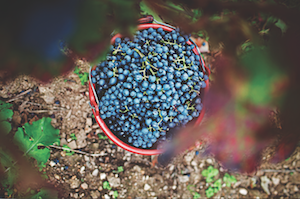“So in a way [the lack of public understanding] doesn’t matter because our job is to recommend something good for the customer, something that will work with the menu, and in this way we are gradually introducing people to the idea that Germany is more than just Riesling,” he adds.
In many ways Germany’s progress and position on the global stage will continue to be defined by the limitations of the nation as a producer. Consider that the long-term average annual production is 9.15hl, accounting for around 2% of global wine production, with domestic thirst for German wines again in growth (following market share denting small vintages in 2010 and 2013), and add in a relatively high entry-level price for the wines, and it is obvious that Germany necessarily needs to position itself as a relatively niche producer of quality wines.
“We will always be a smaller producing nation with mainly small producers, so we can’t really produce large volumes of value wines, having to concentrate on quality instead,” says Keller. “So we need to promote quality and being premium so that people understand this across all of Germany’s wines.”
Currently, though, it’s not Germany’s medley of other exciting and often highly food-compatible whites that are leading the charge in expanding horizons. The Pinot Noir, now often labelled with its international rather than indigenous name of Spätburgunder (as with its white compatriots Weissburgunder and Grauburgunder – namely Pinot Blanc and Pinot Gris), is one of the latest emerging stars on the world’s wine scene.
Recently anointed master of wine Anne Krebiehl is a passionate advocate of German Pinot Noir and explains why – albeit from a very small base and low recognition – it is now starting to make waves.
Soil variety
“Germany has so many different soils and climates,” says Krebiehl. “And while people say that Pinot Noir needs Burgundian type soils to really excel, in Germany we see excellent Pinot Noirs from limestone, but also schist, slate, sandstone and volcanic soils, so you have a really wide choice. But remember that these are all within an Old World framework in style.”
It’s a message that is gradually gaining ground, helped along by hikes in the prices of Burgundy and an often very favourable quality-to-price ratio for their German rivals. Bear in mind, too, the often-overlooked fact that Germany has the third-biggest plantings of Pinot Noir in the world after France and the US (where sparkling wine takes the lion’s share), and the potential, coupled with the quality now coming out of Germany, is clearly high.
Back to London, which remains at the forefront of global wine trends, there are some intriguing signs that Germany’s modern offerings are engaging with a fresh generation.
At the uber-hip Sager + Wilde wine bar in the East End of London, bearded hipsters can be found quaffing German Pinot Noir by the glass, while the creative types of Clerkenwell and media folk of Soho have been devouring German Riesling dispensed on tap at Vinoteca’s influential wine and food oasis. And at Gordon Ramsay’s eponymous three Michelin-starred flagship restaurant in swish Chelsea, Grosses Gewächs quality reds and whites are also being poured by the glass.
It’s a niche but growing scene that is being echoed among influential and cutting-edge restaurants and bars around the world, marking, perhaps, the long-overdue renaissance of quality German wines.




